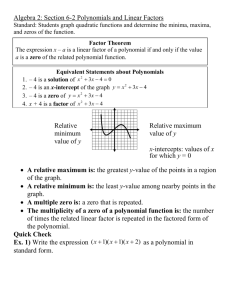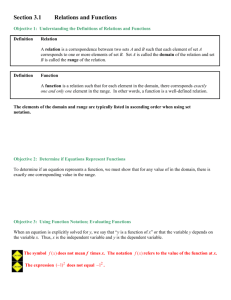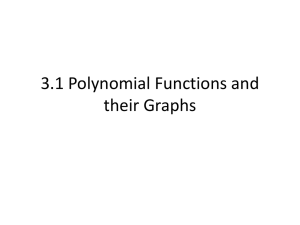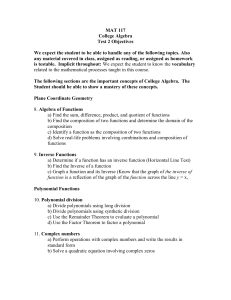Alg2 Notes 5.2
advertisement
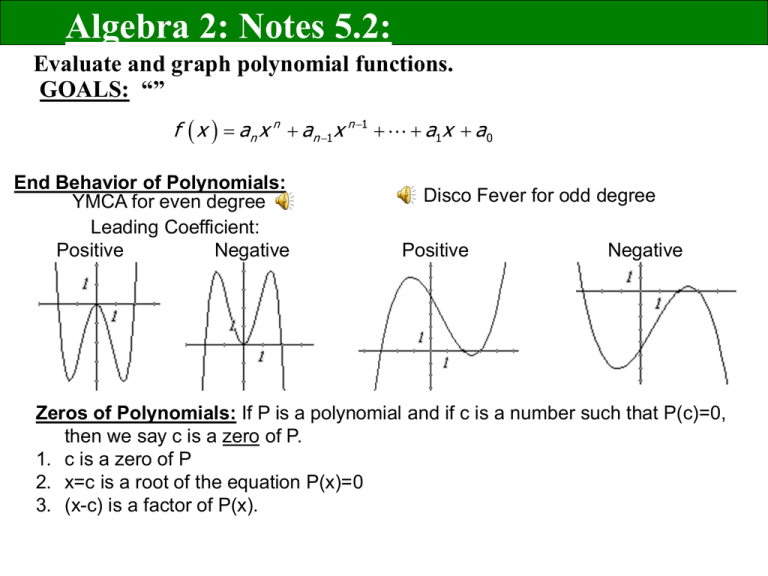
Algebra 2: Notes 5.2: Evaluate and graph polynomial functions. GOALS: “” f x an x n an 1x n 1 End Behavior of Polynomials: YMCA for even degree Leading Coefficient: Positive Negative a1x a 0 Disco Fever for odd degree Positive Negative Zeros of Polynomials: If P is a polynomial and if c is a number such that P(c)=0, then we say c is a zero of P. 1. c is a zero of P 2. x=c is a root of the equation P(x)=0 3. (x-c) is a factor of P(x). Algebra 2: Notes 5.2: Guidelines for Graphing Polynomial Functions: 1. Zeros: Factor the polynomial to find all its zeros; these are the x-intercepts of the graph. 2. Test Points: Make x-y table. Include values to determine if graph lies above or below x-axis. Include y-intercept in table. 3. End Behavior: Determine the end behavior of the polynomial. 4. Graph: Plot intercepts and other points from table. Sketch a smooth curve that passes through these points and exhibits the required end behavior. 5.2 Example 1: Polynomial function? End behavior? Check powers. All need to be positive and integers. a. f x 3x 4 x 3 2.5 6x 2 Power of 2.5 makes it not a polynomial. b. f x x 2 3.7x 9x 4 Polynomial, and highest power is 4 so it is a 4th degree polynomial or quartic. 5.2 Example 2: Graph the polynomial function. f x x 3 2x 2 2x 1 1st Factor if you can. Disco Fever graph since it is odd and left 2nd Decide if Disco or YMCA type graph. side goes up while right goes down since 2nd Plug in x values and find y. leading coefficient is negative. 3rd Plot points. 5.2 Example 3: Synthetic division. Use synthetic division to evaluate the function when x=2. f x 2x 4 3x 3 6x 2 3 Synthetic Division: For dividing by x-c. Place c on the ledge. Put coefficients of the polynomial in row (keep the sign with the number). Bring down 1st number. Times c by the number brought down. Place result under next number. Add the result. Then repeat till last number. 2 2 3 6 0 3 4 14 16 32 2 7 8 16 35 f 2 2 x 4 3x 3 6 x 2 3 f 2 35

